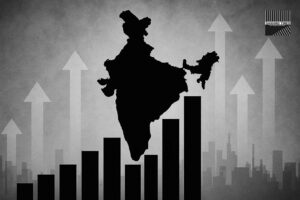New Delhi, October 12, 2025 — In a renewed diplomatic and economic overture, India’s Commerce & Industry Minister Piyush Goyal held substantive talks with Canada’s Maninder Sidhu, Canada’s Minister of International Trade, aimed at deepening bilateral ties across clean technology, AI, agriculture value chains, and critical minerals. The meeting reflects a conscious pivot by both nations to transcend past frictions and recast their relationship around strategic complementarities.
Officials from both sides signalled that follow-up dialogues will be held over the next quarter to firm up frameworks, investment structures, and sector-level commitments. The engagement is viewed as a pragmatic step toward diversifying supply chains, securing critical input materials, and fostering innovation-driven trade.
Meeting Highlights & Specifics
The dialogue between Goyal and Sidhu centered on several high-stakes domains:
- Clean technology & green energy collaboration: leveraging Canada’s strengths in sustainable technologies, carbon capture, clean fuels, and renewable energy systems.
- AI / digital technologies: exploring joint development, deployment, and co-innovation in AI solutions tailored to industrial and social needs.
- Critical minerals: ensuring supply of battery metals, rare earths, and associated upstream and midstream processing capabilities.
- Agriculture & value chains: deepening cooperation in agri technology, food processing, cold chain logistics, and export pathways.
- Trade & investment frameworks: creating smoother institutional channels, faster approvals, bilateral investment protections, and improved market access.
In his post on X, Canada’s Trade Minister Sidhu wrote:
“Together, we’re exploring new trade opportunities in clean technology, AI, agriculture, critical minerals, and other key sectors.”
Responding, Minister Goyal added:
“Held a productive discussion with my Canadian counterpart @MSidhuLiberal. We must ground our economic, trade and investment ties in mutual respect, trust and balance.”
From India’s side, Goyal emphasized that the complementarity between the two economies—Canada with resource endowments and India with manufacturing scale and tech talent—can drive mutually beneficial growth.
He also referenced that India’s exports to Canada had seen nearly 9.8 % growth in 2024-25, rising to USD 4.22 billion, while imports from Canada declined to USD 4.44 billion from USD 4.55 billion the year before.
The talks are especially timely, as Canada’s Foreign Minister Anita Anand is slated to visit New Delhi soon and will meet Goyal and External Affairs Minister Jaishankar to flesh out strategic cooperation frameworks.
Why This Matters: Strategic Stakes & Opportunities
This meeting is more than symbolic diplomacy—it reflects shifts in global supply chains, energy transition imperatives, and the geopolitical positioning of mid-sized powers. Below are the key stakes and opportunities for each side.
For India
- Securing critical inputs for clean energy & electronics
India’s push toward electric vehicles (EVs), grid storage, renewable energy, and advanced electronics hinges on access to critical minerals (lithium, nickel, cobalt, rare earths). Canada is well positioned as a supplier of many such inputs. - Upgrading manufacturing & value chains
With “Make in India 2.0,” India aims to scale up advanced manufacturing. Collaborations in clean tech, AI, and processing of minerals can help India move up the value chain rather than remain a raw-material importer. - Technological leap & inclusive growth
AI, automation, and clean solutions can enhance productivity in agriculture, healthcare, resource management, and climate adaptation—especially in rural and under-served areas. - Strategic diversification & geopolitical hedging
India seeks to reduce overreliance on any single geography for critical inputs (especially China). Deepening ties with Canada diversifies supply source risk. - Diplomatic reset & trust building
In recent years, India–Canada relations have witnessed periods of tension around political issues. This renewed economic focus helps build a forward-looking partnership less anchored in past disputes.
For Canada
- Market access to a large and growing economy
India offers one of the fastest-growing markets for clean technology, digital systems, and higher value exports. Canadian firms can gain large scale by aligning with Indian demand. - Demand for sustainable technologies
Canada’s clean tech capabilities (carbon capture, hydrogen, waste management, renewable systems) can find viable deployment in India’s energy transition roadmap. - Global profile & leverage in critical minerals value chain
As nations seek stable supplies of battery metals and rare earths, Canada—already a major player in mining—can move up into processing, refining, and value-added exports. - Green investment and job creation
Canadian industries and investors can create jobs, R&D centers, and joint ventures in India, with reciprocal benefits for knowledge transfer and scaling. - Strengthening geopolitical partnerships
For Canada, deepening ties with India is part of its Indo-Pacific strategy to build resilient partnerships beyond traditional Western alliances.
Challenges & Risks
- Regulatory & investment uncertainty
Differences in regulatory regimes, approval timelines, and bureaucratic inertia may slow down investments and projects. - Environmental & social safeguards
Mining and processing of critical minerals carry environmental and community risks. Ensuring sustainable, socially responsible practices is essential. - Quality of supply chain infrastructure
Midstream processing, refining capabilities, and logistics must scale to turn raw mineral exports into higher exports rather than mere raw shipments. - Technology transfer and IP protection
Sensitive technologies in AI and clean tech require balanced frameworks to protect intellectual property while allowing meaningful partnerships. - Geopolitical volatility
Any renewed diplomatic tensions (e.g. over diaspora issues or foreign policy) could derail momentum. - Competition & global dynamics
Other nations also vie for access to India, Canada, and critical minerals (e.g. Australia, U.S., China). Each side must navigate strategic competition.
Paths Forward: What to Monitor
- Formal MoUs / agreements
Expect announcements in coming weeks on MOUs in mineral cooperation, clean energy projects, or joint AI labs. - Operational pilots / projects
Early projects in battery mineral processing, clean hydrogen, AI deployment in agriculture or climate, or cross-border investment deals. - Institutional mechanisms
Setting up joint working groups, trade commissions, regulatory harmonization committees, and bilateral investment protection agreements. - Visit by Canadian FM & bilateral delegation
The scheduled India visit by Anita Anand may yield strategic agreements, trade delegations, and sectoral roadmaps. - Private sector engagement & partnerships
Indian firms in manufacturing, startups in clean tech and AI, Canadian mining and technology firms co-investing. - Progress on trade treaties
Review or revival of trade agreement negotiations such as Early Progress Trade Agreement (EPTA) or free trade frameworks.
A Tentative New Chapter
India’s conversation with Canada today signals more than transactional trade diplomacy—it marks a recalibration of bilateral economic strategy. For India, the opportunity lies in securing future-facing technologies and strategic resources while enhancing its manufacturing and innovation base. For Canada, it is an opening into one of the world’s most dynamic markets and a chance to assert leadership in sustainable tech and materials.
Yet, translating the ambitious rhetoric into on-the-ground projects will require meticulous execution: bridging regulatory gaps, aligning incentives, and building trust among public and private actors. If successful, this could become a model for how middle powers reimagine economic tie-ups in an era of volatility and supply chain disruption.
India and Canada may yet see this meeting as the start of a new chapter—one of pragmatic cooperation, forward-looking trade, and shared technological ambition.
#IndiaCanada #Trade #CleanTech #AI #CriticalMinerals






















+ There are no comments
Add yours